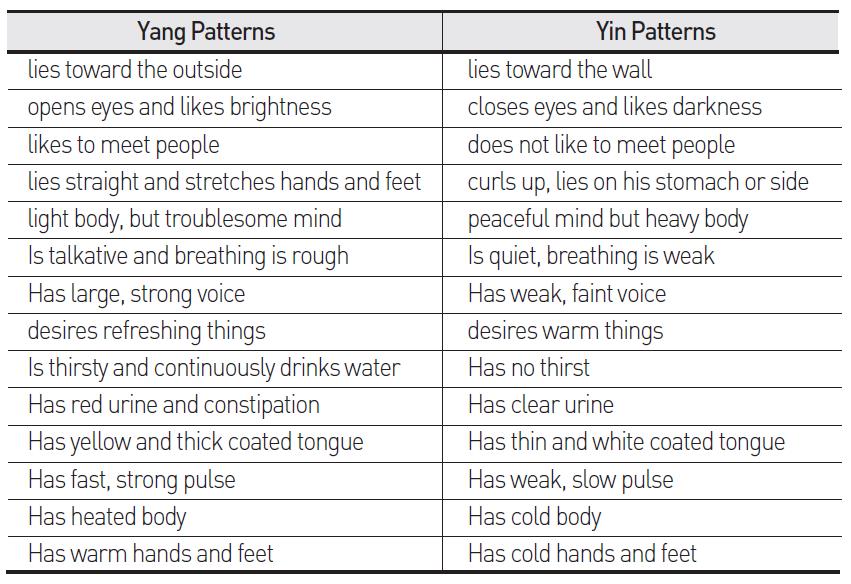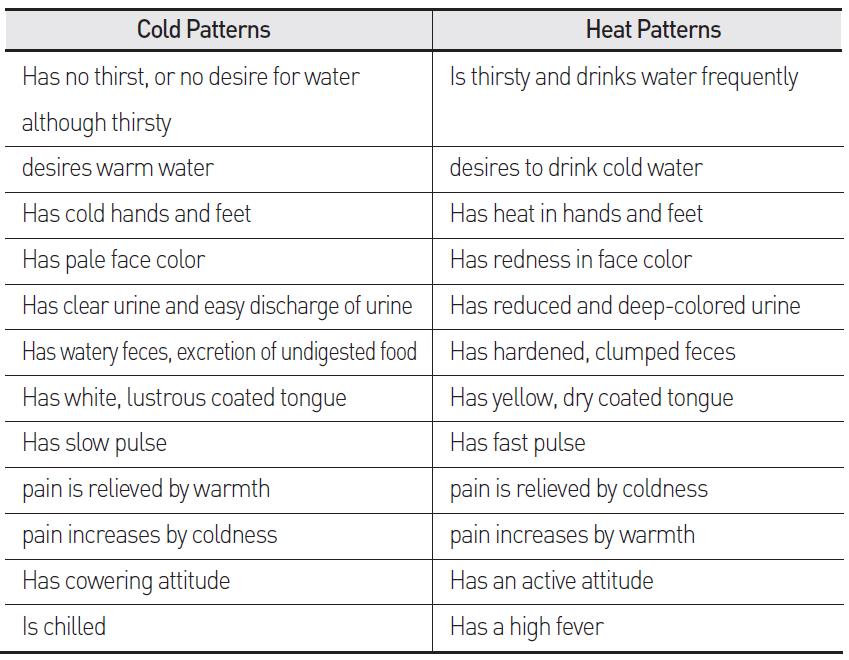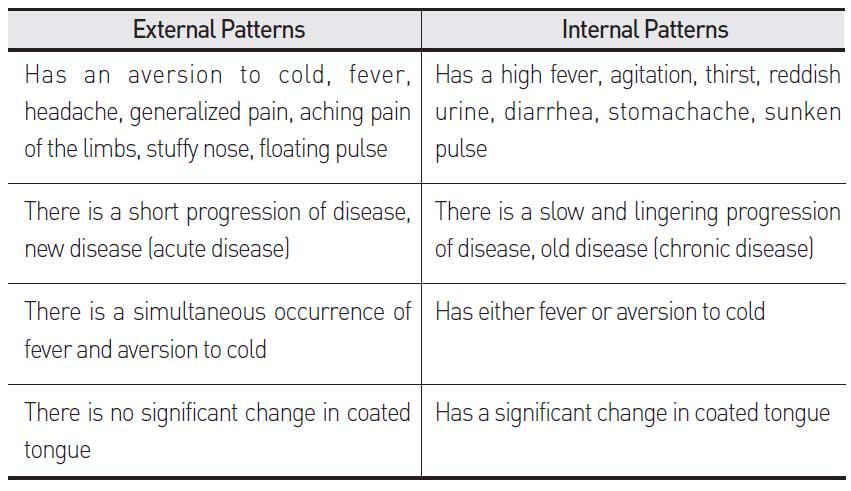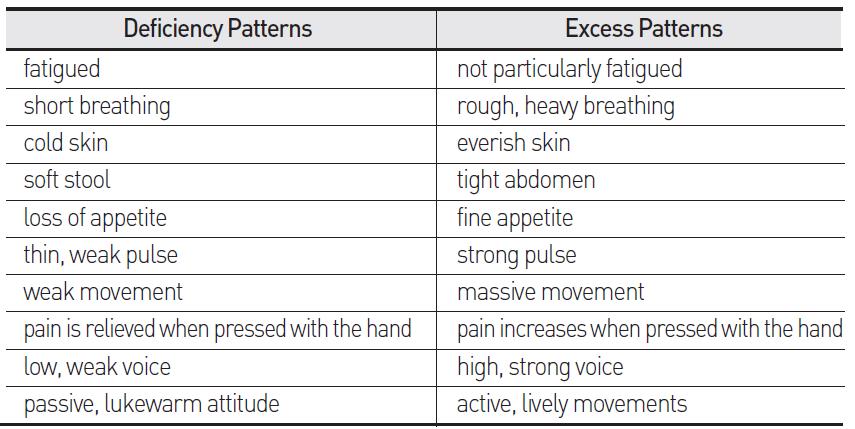Written by Jeonghwa Lee, Choonjae Lee, Published by Korea Institute of Oriental Medicine
Pattern identification is a process of analyzing and examining the cause, nature, location and change of a patient’s disease, also called syndrome differentiation. This depends on the organic relationships among the symptoms gathered from the four methods of inspection-listening and smelling, inquiry, palpation and data.
1. Types of Pattern Identification
1) Eight-Principle Pattern Identification: This is the categorization of patterns according to yin and yang, cold and heat, exterior and interior, and deficiency and excess.
2) Visceral Pattern Identification: This is the categorization of patterns according to pathological changes of the viscera and bowels.
3) Pattern Identification of Qi-Blood and Fluid-Humor: This is the categorization of patterns according to the condition of the qi and blood, and fluid and humor
4) Six-Meridian Pattern Identification: This is the categorization of patterns according to the six meridians – greater yang, yang brightness, lesser yang, greater yin, lesser yin and reverting yin.
5) Defense, Qi, Nutrient and Blood Pattern Identification: This is the categorization of disease patterns according to the external, internal and physiological relationships of the defense system, qi, and nutrients in the blood.
6) Triple Energizer Pattern Identification: This is the categorization of patterns according to the theory of the triple energizer – upper, middle and lower energizer.
7) Disease Cause Pattern Identification: This is the categorization of patterns according to the causes of disease.
2. Comparison of Pattern Identifications of TKM and Disease Names of Western Medicine
TKM makes its primary pattern identification according to the eight-principle pattern identification after gathering information through the four examinations, and forms a final analysis through the visceral, six-meridian, triple energizer, and constitutional pattern identifications. Western medicine goes through visual inspection, history-taking, auscultation, palpitation, and pathological tests such as blood, X-ray, ultra-sonography, and urine analyses to confirm the illness, discover the pathogen, and determine the disease’s name.
There is a difference between pattern identifications of TKM and disease names of Western medicine. For example, there is a patient with a stuffy and runny nose. The Western doctor, first, examines the patient’s nose condition closely. Then, he observes inside the nose with medical instruments and confirms that there is an inflammation in the nose mucosa. If there are no disorders other than an inflammation, he diagnoses it as rhinitis. This means that there is an inflammation in the nose.
The Oriental doctor is interested in why such a symptom occurs in the nose. He analyzes primarily how the syndrome is related to the eight-principle pattern identification. If the patient’s nasal mucus is white, the syndrome is related to cold, exterior and yin. The doctor analyzes how the nose is related, secondarily, to the visceral pattern identification and confirms the condition of the lungs. If the result of the pattern identification is revealed as a lung cold pattern, he analyzes whether the pattern is related to other causes. After checking whether the pattern is due to the innate weakness of the lungs or the heart disorder, he finally determines whether the pattern is a lung cold pattern or not.
The pattern or syndrome of TKM is determined by a holistic analysis of the condition of the whole body and the fundamental causes of the disease. It is not greatly interested in detailed changes of local lesions. The disease naming of Western medicine is a concept that demands strictness in small changes of local lesions instead recognizing the discordance of the whole body.
3. Eight Principle Pattern Identification
1) Yin and Yang

2) Cold and Heat

3) Exterior and Interior

4) Deficiency and Excess


































